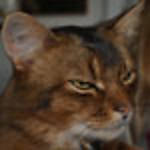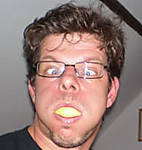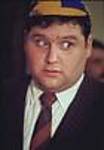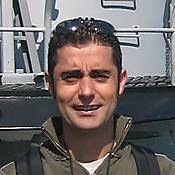Go to modelshipwrights.com for the current dynamic site!
Counter Below!
The Scene…
Since the Divine Waterline campaign is designed to feature unusual water effects and as I've always wanted to try a depth charge effect, I selected a typical scene from the Battle of the North Atlantic. This is a depiction of HMS Stanley delivering an intensive depth charge attack in the autumn of 1941.
The Ship…
HMS Stanley was originally USS McCalla, one of fifty 'four stackers' transferred to the Royal Navy in 1940 in exchange for basing rights on British possessions in the western hemisphere. In January 1941 she was taken into the yards for an extensive conversion into a long-range escort for convoy work across the oceans. This involved removing the forward boilers for increased fuel capacity, changing the armament, and an entire rebuild of her superstructure, giving her a completely different silhouette.
She reported to convoy duty in August 1941 and by December was attached to convoy HG 76 bound for Britain from Gibraltar. On the 17th she joined in on the destruction of U-131 and picked up 47 survivors. The following day, she helped sink U-434 and rescued 42 U-boatmen. On December 19th, while on station astern of the convoy, she was torpedoed by U-574 and sank with all but 25 of her crew. Within minutes, however, the sloop HMS Stork destroyed the U-boat.
The Kit…
The basis for the Stanley was Revell's classic four-stacker, previously released as the Campbeltown, Ward, and Buchanan. The scale is an odd, but handy 1:240. Because of the extensive modifications to the actual ship, construction meant a lot a scratchbuilding, too. This was a plus because it eliminated the need to deal with the original kit's shortcomings. In addition to the boxy superstructure, all the guns are scratchbuilt and the sole remaining torpedo mount was detailed with some odds 'n ends from plastic scrap. Apart from the hull halves, the only kit parts left are the funnels, mast, and anchors. The crewmen are Preiser Z gauge railroad figures.
Another advantage to modeling the Stanley is the simple but distinctive Western Approaches paint scheme (also called the Thayer System) which is a nice change from haze gray.
The Water Effects…
I am a devotee of modeling paste for ocean surfaces. Though a bit pricey, it is easy to apply and texture, especially for the larger scales I work with. Once dry and all the cracks have been filled in, I use spray paints for the basic water coloring. In this case, I left paint off where I wanted to place the depth charge effects. Also, the stiffness of the modeling paste easily allowed the build up of a circular ridge around the intended blast areas, looking much like a lunar impact crater.
I have recently discovered a way to replicate foamy white water seen on wakes and wave tops: take synthetic cotton like polyfibre and saturate pieces of it with white acrylic tube paint--and I do mean SATURATE. Sometimes you can do bits beforehand then apply them after drying to your scene, blending them into the water base with more tube paint, or you can apply the polyfibre directly, saturating it with paint as you go, but this will require working with both hands and a lot of patience.
Since I use a product called gatorboard (a super stiff foamboard) for my bases, I can score triangle-shaped sections along the model's waterline which allows me to induce the troughs and peaks a high-speed hull produces as it moves through water. With the depressions and raised areas now in the base material, the modeling paste is applied to follow these contours as the simulated water.
Water Blast Effects…
To produce violent water effects like shell geysers or, in this case, a depth charge blast, I use artificial spider webbing which is sold everywhere (in North America, at least) before Halloween. It can be cut with scissors and since its fibers generally run in one direction, it's great for these effects and for other directed water situations like fire hose streams. First, build an armature from plastic rod, rather like a denuded pine tree, making sure it is white to match the spider webbing. Then, pry loose individual sections of webbing, cutting them away from the bulk, and apply them around the armatures without teasing them apart. Use some glue to affix the fiber bundles to their armatures, or they'll slide off. Keep adding until your 'blast tree' is covered and adjust as needed to fill out the structure.
The other depth charge effects were a variation on the foam wake method using paint-saturated polyfibre set inside the plaster craters and then coated with gloss artist's gel.


































